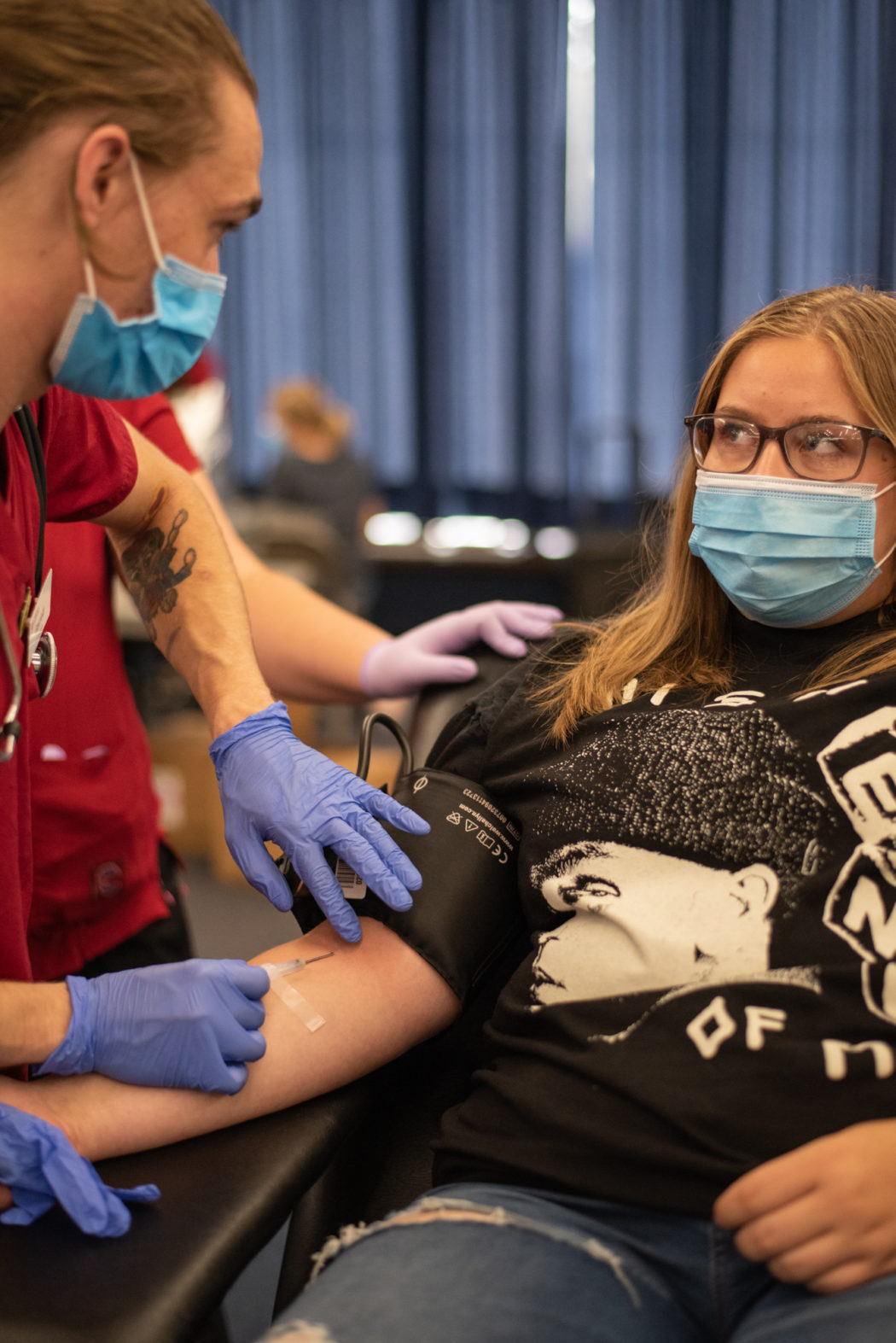Opinion: Plasma donation is a plas-must!
Plasma donation is a plas-must!
The annual blood drive has faculty busy collecting donations from students in the race of Utah State University against Weber State University. This is a worthy pursuit that can help to support blood banks and save lives, but there are other ways to actually earn money by donating blood. Logan is home to a Biomat, a plasma donation center that financially compensates its donors.
The Biomat, owned by the pharmaceutical manufacturer Grifols, is located at 1045 N Main St, Unit A, and has some requirements for all donors before entering. Donors should have a pictured ID, their Social Security card and/or a credit card and proof of your living situation to get started. Donors must be 18 or older and must weigh at least 110 pounds.
First time donors can currently earn up to $100 for the first five donations (although there are often promos going on where donors can earn more) and can visit twice a week. What separates plasma donations from blood donations, is that blood is taken out of the body to be stored until it can be transfused into someone else. The process takes about twenty minutes, and donors are not allowed to donate for another eight weeks until their blood cells have regenerated. Plasma on the other hand, can take about an hour for one session. There are a myriad of locations across the country including nearby centers in Idaho (Boise, Rexburg and Pocatello) and Utah (Cedar City, Clearfield, Ogden, Orem, Provo, Roy, Salt Lake City, Sandy, Spanish Fork and Taylorsville).
A Grifols corporate affairs official, Vlasta Hakes, said, “Plasma is not directly transfused into a patient, and when they take the plasma out, we are returning the red blood cells back to the donor.”
Plasma is just a part of blood, made up of proteins and antibodies that are used to manufacture and create medicines for people with rare and chronic conditions including patients with pre-existing conditions who are more at risk for COVID-19.
The Biomat is in great need of donations, as 93% of plasma is water, and only 7% can be used to manufacture medicine. Hakes said, “We encourage students to come in frequently. It takes anywhere from 130-1,200 donations to collect enough proteins and antibodies to make one year’s worth of medicines for one patient.”
Grifols produced a public service announcement on their YouTube channel that described the high demand for plasma. In the video, it explains that plasma goes through a variety of tests all over the country where it can go through processes that includes thawing and emptying the plasma collection samples. It also states that there are hundreds of plasma proteins, and Grifols uses five key proteins including, coagulation factor, antithrombin III, immune globulins, alpha-1 antitrypsin and albumin.
Students from USU should use all the resources and time they have to donate plasma at the Biomat, not only to volunteer in the community, or save lives but improve financially. It’s a win-win. Hakes urges students to tell their friends, coworkers, peers and family to come in and donate. The company is so passionate about helping to produce medicine, that they are willing to team up with non-profit charities to promote their process in the pursuit of saving lives. Fundraisers set up by the school and sororities/fraternities can team up with the Biomat to raise money and awareness. It’s all worth it to donate plasma to be utilized into something incredibly valuable for millions of people worldwide.

Megan Cowdell is a second-year communications student. She loves going on bike rides, reading mystery novels and watching cheesy movies.

